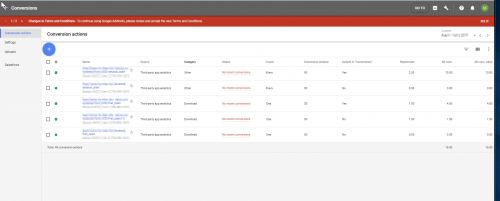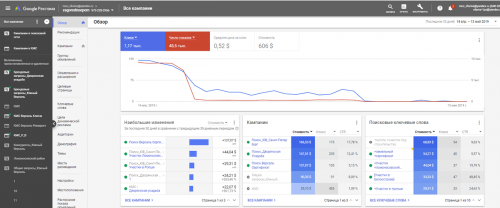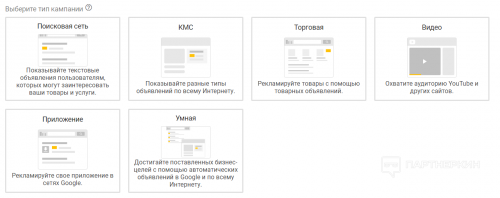Wondering why your Google Ads aren’t running again, despite replenishing and setting up your campaign? You set everything up properly, but the campaign still hasn’t started? Learn about the 11 most common “omissions” that can lead to Google Ads being blocked.
Reason 1. Lack of funds
A very common reason is simply a lack of funds in your Google Ads account. Therefore, you should monitor the expiration date of the connected card and, above all, the amount of funds available on it.
Let’s also pay attention to emails notifying of the inevitable lack of funds automatically sent by Google Ads!
Reason 2. Selection of phrases with low potential
When activating Google Ads campaigns on the search network and targeting it with keywords, you should check which keywords are included in each ad group. It is important that they are thematically related to the content of the landing pages. You have to remember that they are not too extensive. Phrases with the so-called long tail, often have a high conversion rate, but due to its accuracy – also little impression. You should also make sure that they do not have the status of “low search volume”.
Reason 3. Low quality
Each newly created keyword must develop a so-called “Quality Score”. This is one of the most important attributes for your ads. Therefore, it is extremely important that on a scale from 0 to 10, it approaches the maximum number.
Your Quality Score is affected by your predicted clickthrough rate, ad relevance, and landing page quality score. It is important that all 3 components achieve the maximum possible result, the so-called above average status. This will become a Quality Score that will have a significant impact on how often our ads appear.

Case 4. Low CPC
In addition to Quality Score, cost-per-click (CPC) is one of the most important determinants of ad serving. Accordingly, a high CPC, along with Quality Score, translates into an Ad Rank, which in turn allows you to win the auction (along with other advertisers) and place our ad in the appropriate position in the search results.
Reason 5. Too ambitious goals
In the Google Ads system, we have a choice of different bidding strategies, ie the ability to bill for impressions, clicks or conversions. When using automated strategies such as ROAS advertising targets (ROAS) or target CPAs (goals to be pursued by a machine), remember that the amounts you set will actually be achieved. Preferably on the basis of a preliminary calculation of the margin or return on investment.
Excessive performance can cause your system to fail, so your ads may stop running or may not start at all.
If so far your campaigns have generated 5 times more revenue than costs, don’t try to set them immediately to generate 10 times more revenue. Changes to automatic strategies should fluctuate by about 10-15%.
When determining the target return on investment or CPA, pay attention to historical data, they are the most accurate method of determining the appropriate amounts. In a situation where we use a newly created account and do not have the above historical data, we should use a keyword planner. The tool will help us choose the initial level of bids.
Reason 6. Frequent optimization changes
Impression issues can also occur when optimizing our campaigns, such as when we change our ROI on advertising or our target CPA too drastically. The recommended rate changes in the above strategies should range from 10-15%.
When optimizing, it’s best not to force your campaign to change its status to “Educational.” This can lead to too drastic changes to the system that will stop campaigns from running.

Reason 7. Limited daily budget
A limited daily budget is an important factor in preventing your ads from showing. You should pay attention to whether it has the status of limited campaign. Let’s also take a look at spending statistics for the last few weeks and see if some days have reached or exceeded your budget.
There are times when your spend exceeds your daily budget, but this information will not appear in the status column. As a result, some of your ads may not show as many times as they could in a given day, reducing your chances of potential conversions.
Cause 8. Ignoring GMC warnings
In Placement Campaigns (PLAs), many factors can prevent your ads from showing. First, check the status of the Google Merchant Center (GMC) account you are using. Also, make sure that your Google Ads account and GMC are linked and verified.
You should then check for GMC errors that are blocking the campaign from working properly. The same question applies to the product itself. Do the products we want to advertise have the status “active”? If not, what is the reason for this? This may be due to a lack of experience because our products do not comply with Google’s policies. We can check all the necessary information in the GMC diagnosis.
Reason 9. Low product quality
Poor product quality can also be a problem. Product names and descriptions are very important here. The system uses the data contained in the attributes: Name, Description, as well as Product Type and Google Product Category, to match individual products with queries in the Google search engine.
If these attributes are incorrectly filled in or of very poor quality, it will lead to poor performance and may even lead to a complete lack of experience.

Reason 10. Mixing targeting options
When running or optimizing a campaign, we recommend checking the targeting methods we used for it.
A very good practice for Display Network campaigns is to combine different targeting methods, such as topics, interests, custom lists, placements, remarketing lists, similar audiences, and more. This allows us to narrow the audience and target our advertising very precisely to the people they really need to go to. However, keep in mind that you shouldn’t combine too many targeting options in one ad group. Then the system will not be able to find enough recipients, so our campaigns will not start at all.
Reason 11. Violation of the rules
Your ads – on both the search and Display Networks – may not show because your ads have been disapproved. There can be dozens of reasons for this. You can check each of them in the “status” column.
If in doubt, you can hover over the deviation information, so we get an extended description of the reason for the deviation. The most common causes include:
- broken landing page – let’s check which landing page the ad is aimed at, it may happen that there is no advertised product on the website,
- using capital letters – YOU CANNOT WRITE EVERYTHING IN THE HEADING
- punctuation – in media advertising it is best to avoid the use of exclamation marks and question marks, so we will keep our nerves and eternal corrections,
- one domain per ad group
- use of telephone number during transfers,
- very erotic content,
- cryptocurrencies,
- and much, much more that we can read about on Google’s support page.
However, the ad review system doesn’t always work properly, and there are times when your ads have been disapproved, even though they don’t violate any of these policies. Let’s try to edit them first. Adding a period at the end of a sentence or an extra comma can do the trick. If this procedure doesn’t help, all we have to do is contact a Google consultant.









